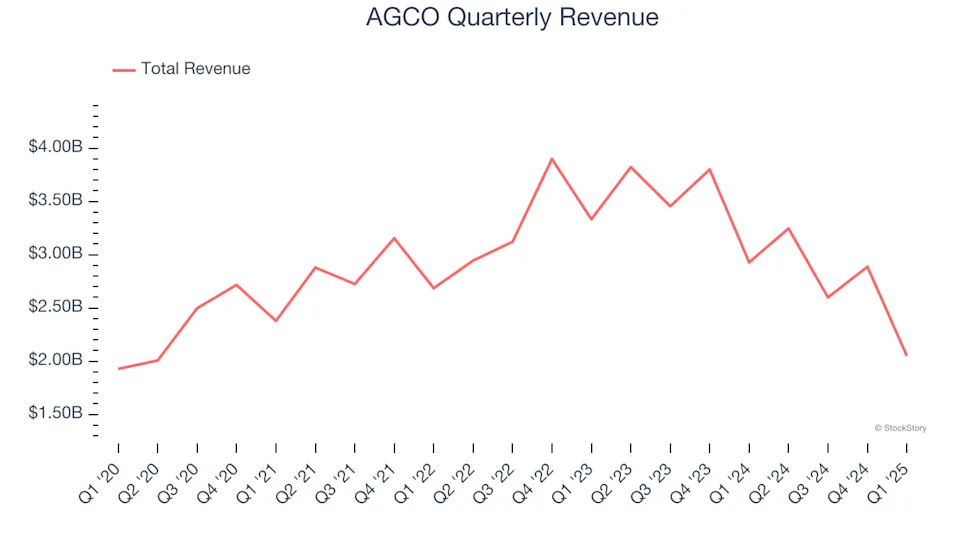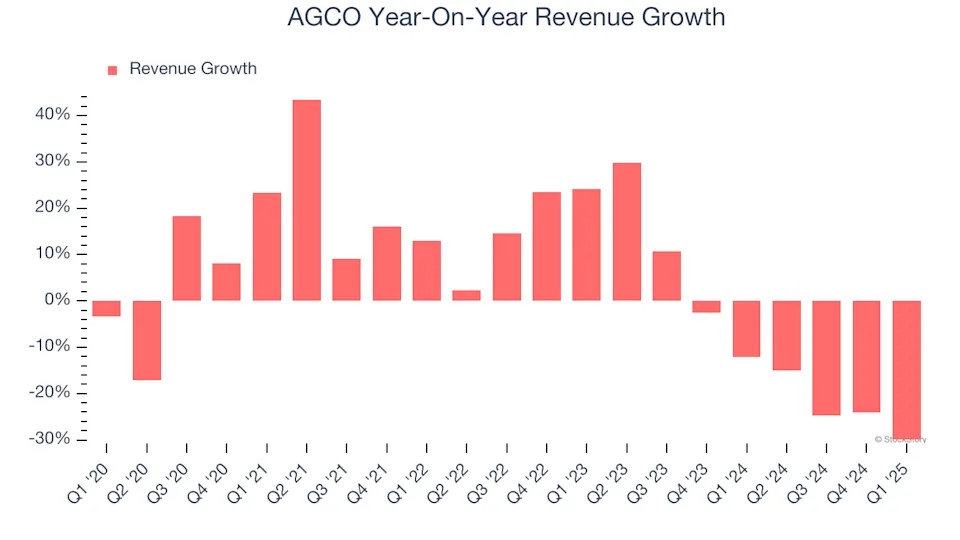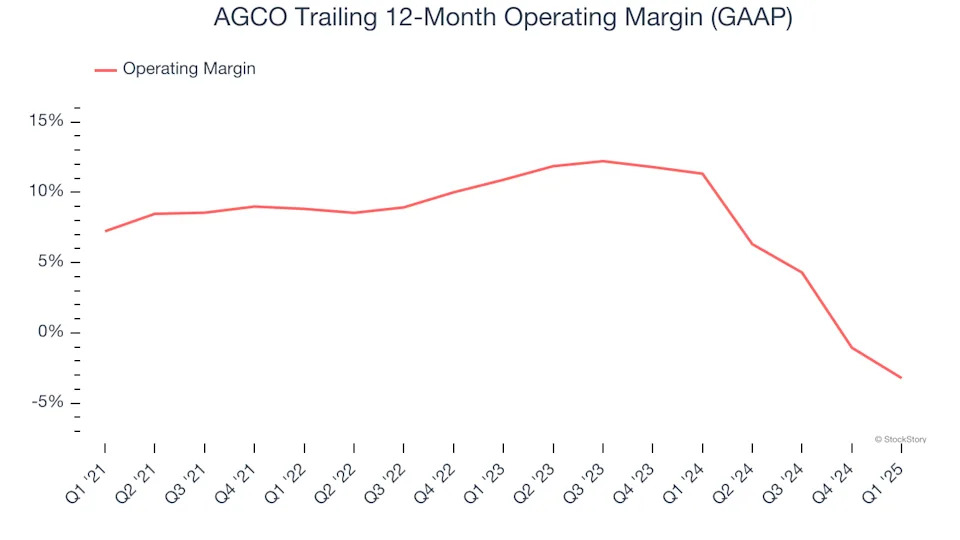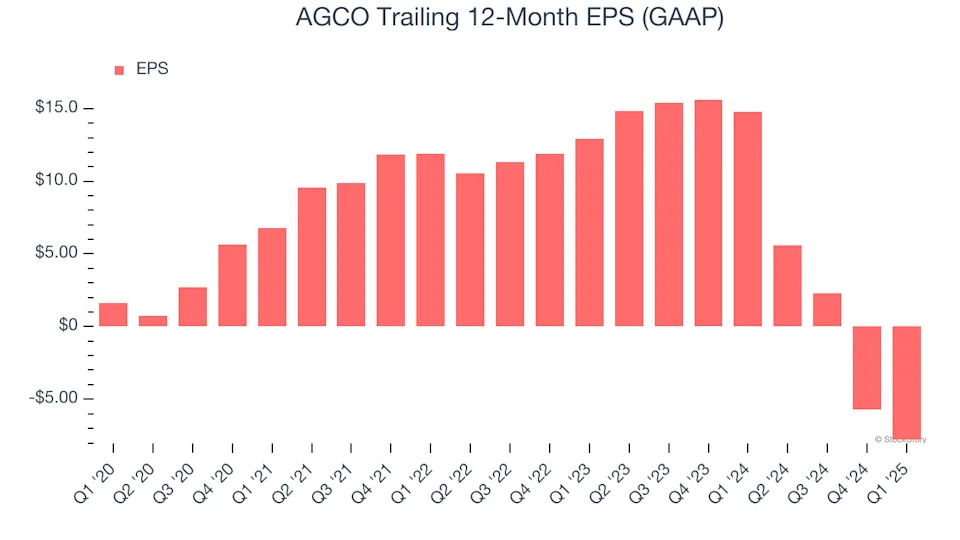Agricultural and farm machinery company AGCO (NYSE:AGCO) announced better-than-expected revenue in Q1 CY2025, but sales fell by 30% year on year to $2.05 billion. The company’s full-year revenue guidance of $9.6 billion at the midpoint came in 1% above analysts’ estimates. Its GAAP profit of $0.14 per share was 82.1% above analysts’ consensus estimates.
Is now the time to buy AGCO? Find out in our full research report .
AGCO (AGCO) Q1 CY2025 Highlights:
"AGCO performed well in the first quarter, which better positions us to navigate global trade uncertainties and continued weak industry demand," said Eric Hansotia, AGCO's Chairman, President and Chief Executive Officer.
Company Overview
With a history that features both organic growth and acquisitions, AGCO (NYSE:AGCO) designs, manufactures, and sells agricultural machinery and related technology.
Sales Growth
A company’s long-term sales performance can indicate its overall quality. Any business can have short-term success, but a top-tier one grows for years. Regrettably, AGCO’s sales grew at a sluggish 3.7% compounded annual growth rate over the last five years. This was below our standard for the industrials sector and is a rough starting point for our analysis.

We at StockStory place the most emphasis on long-term growth, but within industrials, a half-decade historical view may miss cycles, industry trends, or a company capitalizing on catalysts such as a new contract win or a successful product line. AGCO’s performance shows it grew in the past but relinquished its gains over the last two years, as its revenue fell by 10% annually. AGCO isn’t alone in its struggles as the Agricultural Machinery industry experienced a cyclical downturn, with many similar businesses observing lower sales at this time.

This quarter, AGCO’s revenue fell by 30% year on year to $2.05 billion but beat Wall Street’s estimates by 1.8%.
Looking ahead, sell-side analysts expect revenue to decline by 10.3% over the next 12 months, similar to its two-year rate. This projection doesn't excite us and implies its newer products and services will not catalyze better top-line performance yet.
Here at StockStory, we certainly understand the potential of thematic investing. Diverse winners from Microsoft (MSFT) to Alphabet (GOOG), Coca-Cola (KO) to Monster Beverage (MNST) could all have been identified as promising growth stories with a megatrend driving the growth. So, in that spirit, we’ve identified a relatively under-the-radar profitable growth stock benefiting from the rise of AI, available to you FREE via this link .
Operating Margin
AGCO was profitable over the last five years but held back by its large cost base. Its average operating margin of 7.4% was weak for an industrials business. This result isn’t too surprising given its low gross margin as a starting point.
Analyzing the trend in its profitability, AGCO’s operating margin decreased by 10.4 percentage points over the last five years. This raises questions about the company’s expense base because its revenue growth should have given it leverage on its fixed costs, resulting in better economies of scale and profitability. AGCO’s performance was poor no matter how you look at it - it shows that costs were rising and it couldn’t pass them onto its customers.

In Q1, AGCO generated an operating profit margin of 2.4%, down 6.9 percentage points year on year. Since AGCO’s operating margin decreased more than its gross margin, we can assume it was less efficient because expenses such as marketing, R&D, and administrative overhead increased.
Earnings Per Share
Revenue trends explain a company’s historical growth, but the long-term change in earnings per share (EPS) points to the profitability of that growth – for example, a company could inflate its sales through excessive spending on advertising and promotions.
Sadly for AGCO, its EPS declined by 46.7% annually over the last five years while its revenue grew by 3.7%. This tells us the company became less profitable on a per-share basis as it expanded due to non-fundamental factors such as interest expenses and taxes.

We can take a deeper look into AGCO’s earnings to better understand the drivers of its performance. As we mentioned earlier, AGCO’s operating margin declined by 10.4 percentage points over the last five years. This was the most relevant factor (aside from the revenue impact) behind its lower earnings; taxes and interest expenses can also affect EPS but don’t tell us as much about a company’s fundamentals.
Like with revenue, we analyze EPS over a more recent period because it can provide insight into an emerging theme or development for the business.
For AGCO, its two-year annual EPS declines of 61.3% show it’s continued to underperform. These results were bad no matter how you slice the data.
In Q1, AGCO reported EPS at $0.14, down from $2.25 in the same quarter last year. Despite falling year on year, this print easily cleared analysts’ estimates. Over the next 12 months, Wall Street is optimistic. Analysts forecast AGCO’s full-year EPS of negative $7.80 will flip to positive $4.68.
Key Takeaways from AGCO’s Q1 Results
We were impressed by how significantly AGCO blew past analysts’ EPS expectations this quarter. We were also glad its full-year EPS guidance trumped Wall Street’s estimates. Zooming out, we think this quarter featured some important positives. The stock traded up 11.1% to $94.12 immediately after reporting.
Sure, AGCO had a solid quarter, but if we look at the bigger picture, is this stock a buy? The latest quarter does matter, but not nearly as much as longer-term fundamentals and valuation, when deciding if the stock is a buy. We cover that in our actionable full research report which you can read here, it’s free .


